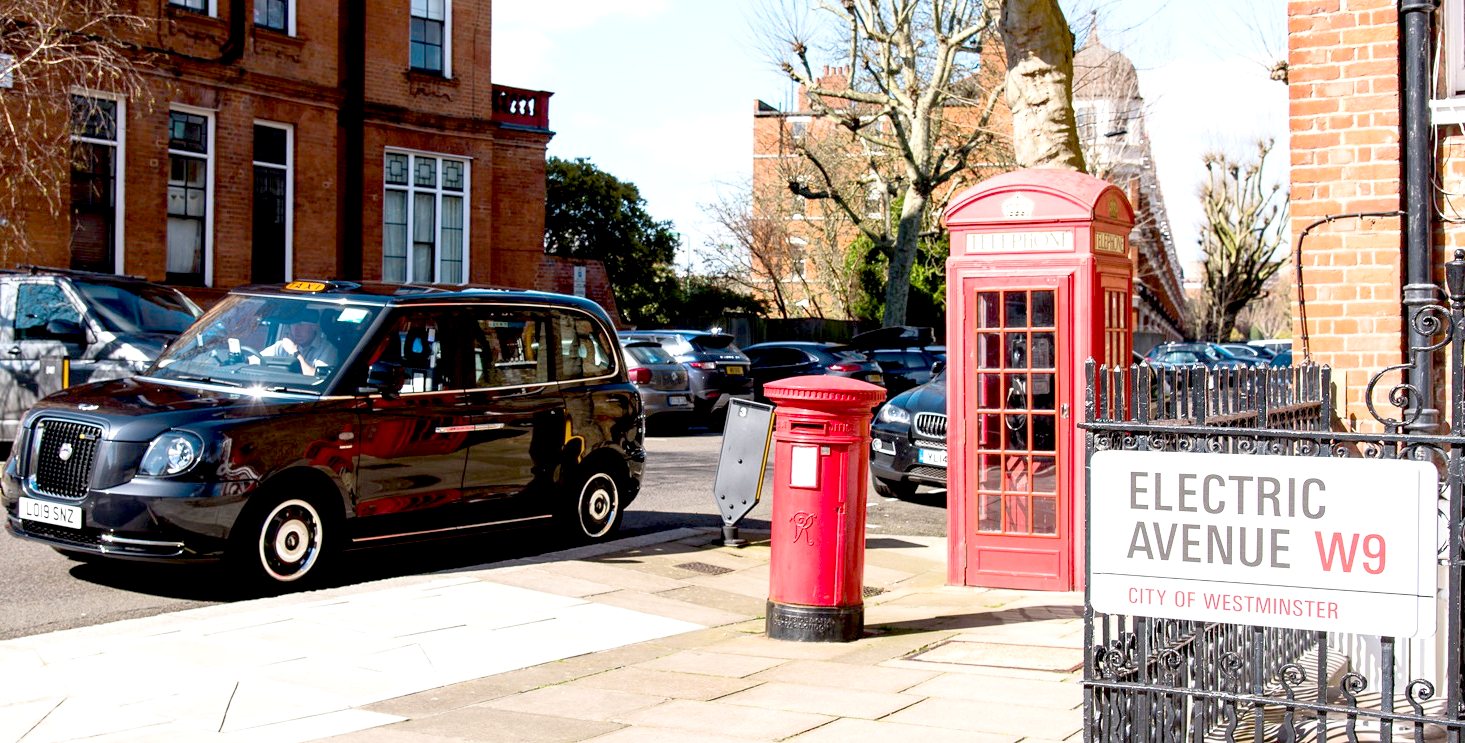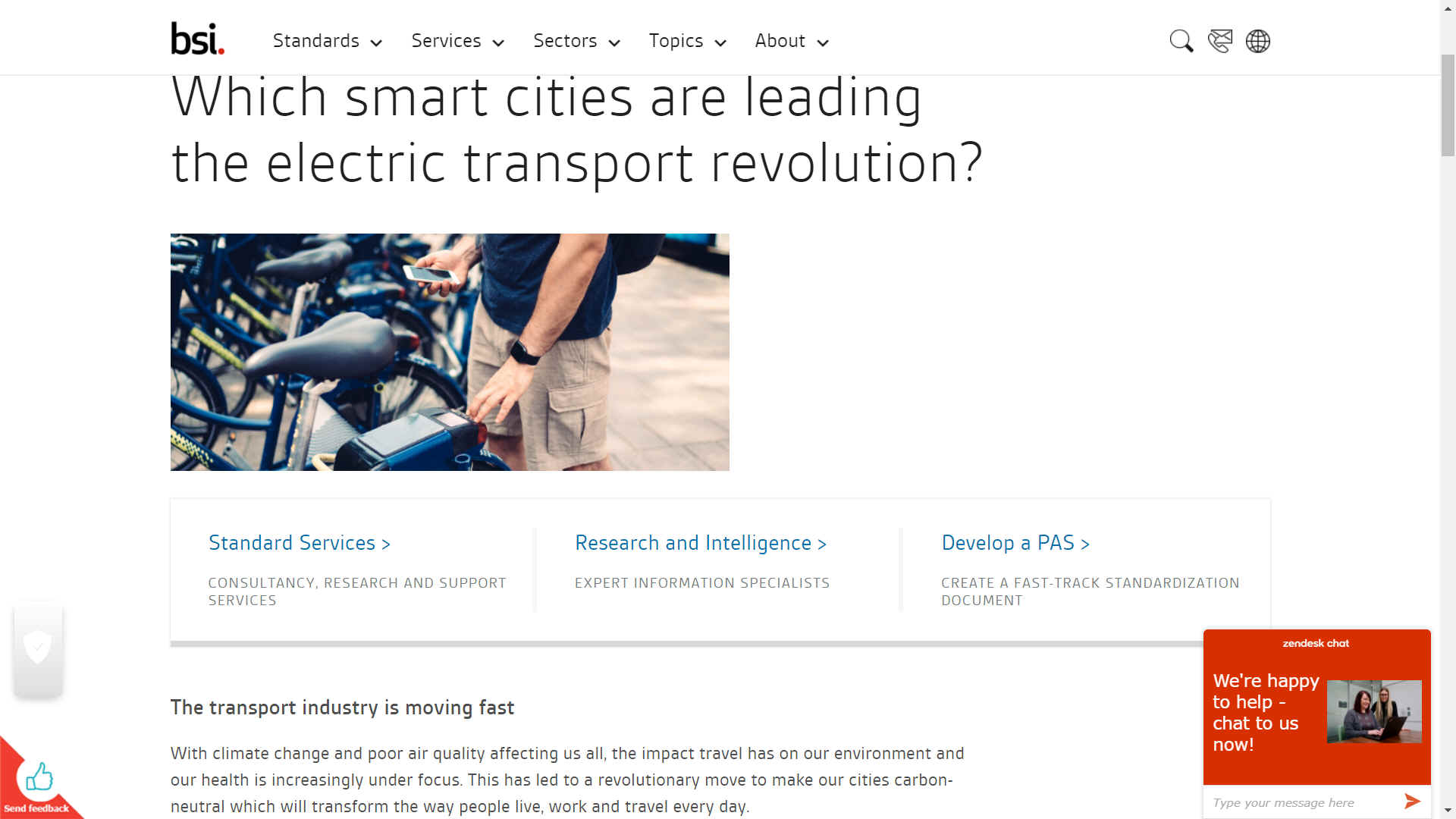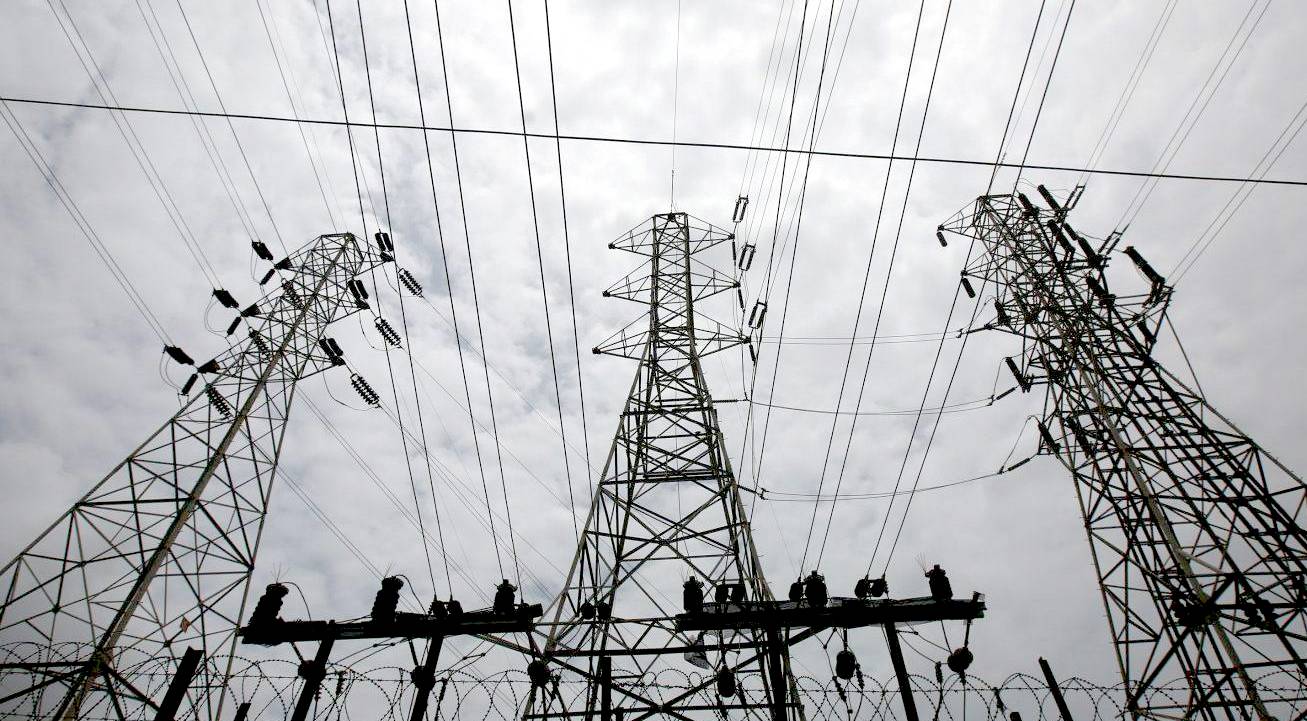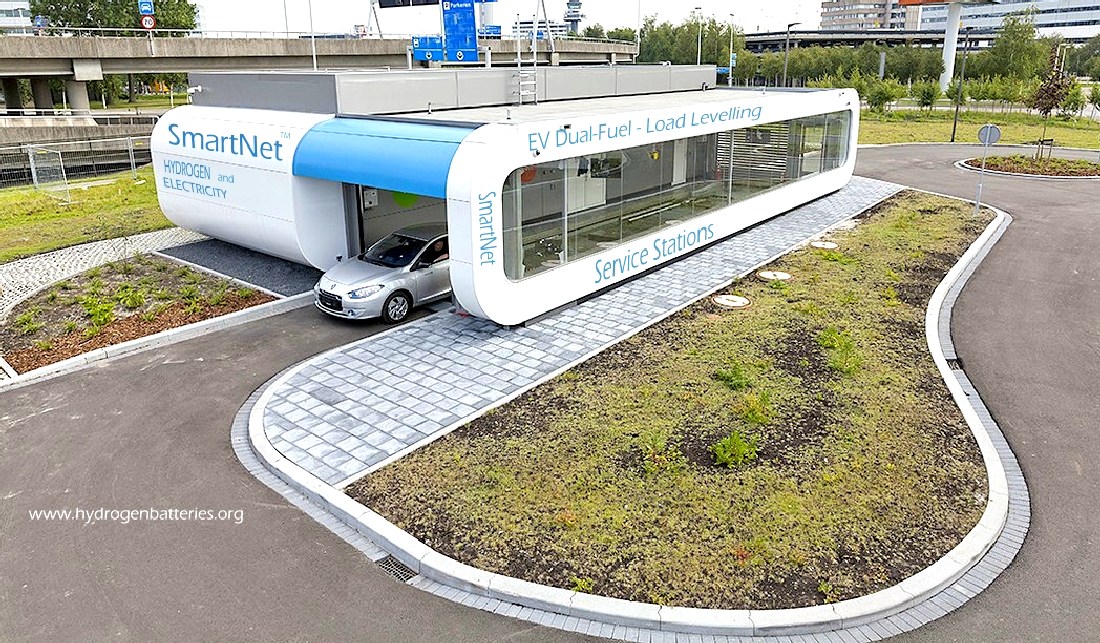|

INVESTMENT
- Canada, along with just about every developed country, is looking to
invest in smarter cities for pollution free transport.
The
infrastructure is not in place for smart cities, but the technology could be
developed to make it happen, provided that we all pull together as an
international effort, or regionally, with a view to allowing other countries
in, affordably and sustainably. SMART ENERGY INTERNATIONAL 8 JUNE 2021 - CANADA INVESTS IN SMART GRID MODERNISATION & RENEWABLES
Canada’s Smart Renewables and Electrification Pathways (SREPs) programme is to award Ca$960 million (US$795 million) over next four years.
The programme launched by Minister of Natural Resources Seamus O’Regan Jr is to supports building Canada’s low emissions energy future and a
renewable, electrified economy through projects that focus on cleaner energy technologies and modernising of electricity system operations.
SREPs will support projects under three streams, established renewables, emerging technologies and grid modernisation.
Established renewables encompass solar PV, onshore wind and small hydro among others, while examples of emerging technologies include geothermal and energy storage.
The minimum project sizes are 4MW for generation and 1MW for storage.
Technologies that will be considered in the grid modernisation stream, which is open only to utilities and system operators, include microgrids, virtual power plants and hardware/software to enable grid services.
“Our new SREPs programme will increase our grid’s renewable capacity and improve its reliability and resiliency,” says Minister O’Regan.
“This means a cleaner, more reliable electricity supply for Canadians. This is how we get to net zero by 2050.”
Projects will receive up to a maximum of Ca$50 million, ranging from a maximum 10% of project costs for established renewables to 30% for emerging technologies and 50% for grid modernisation technologies.
No breakdown is indicated between the streams but a portion of the funding will be reserved for indigenous-led projects, which also may qualify for higher levels of project support.
All the supported projects under the established and emerging streams that are capable of delivering electricity must also be capable of providing grid services traditionally provided by synchronous generators.
Such capability is intended to enable utilities and system operators to build familiarity with and develop new operational processes to better support higher levels of renewable electricity generation.
All the grid modernisation projects will be required to contribute to a wider range of grid services and value streams such as improved asset utilization and efficiency, increased reliability and resiliency, increased system flexibility and enabling renewable integration. They also must be integrated into utility operational processes.
By Jonathan Spencer Jones 
ELECTRIC
AVENUE - In March 2020, Westminster City Council teamed up with Siemens and ubitricity to unveil the UK's first fully converted lamppost charging street – Sutherland Avenue, W9. Residents can now charge their electric vehicles at 24 lampposts at various locations along the street using the ubitricity 'SmartSocket' technology. The project follows over 1,300 installations across London by Siemens and ubitricity with Siemens installing and maintaining the ubitricity charging technology.
‘Electric Avenue, W9’ showcases a shift in attitudes towards EVs that Britain’s capital is experiencing. Data shows 80 per cent of motorists in central London believe it is ‘very important’ that air quality is improved, and 83 per cent have become more concerned about their carbon footprint in the past five years. Westminster has seen a 40 per cent growth in EVs charged in the borough during 2019, which is more than any other borough in London.
EV CHARGING ENEL X - 24 AUGUST 2020
Smart cities use technology like sensors, WiFi connectivity, and data collection, to better equip urban planners in managing a region’s environmental resources. Until recently, cars and trucks were not electronically connected to a city’s energy and data infrastructure, but with the rapid rise of electric vehicles that plug into the grid, everything changes. Smart city planners can accelerate the shift to sustainable
transportation - kickstarting the process by installing EV charging
stations.
For a smart city the most immediate environmental benefit of EVs is straightforward: taking polluting internal combustion vehicles off the
road - and replacing them with zero-emission
cars, trucks, and
buses.
A January 2020 report from the U.S. Conference of Mayors revealed that cities are stepping up their plans to reduce carbon emissions and
air pollution. The report is based on input from 182 cities. Sixty percent of those cities have launched and many will significantly expand a climate initiative in the coming year. It’s not a coincidence that a nearly identical 61 percent of those cities support public electric vehicle charging stations.
Seattle is a prime example of how smart cities have influence over EV adoption. The city’s Department of Construction and Inspections estimates that new legislation will support the creation of thousands of new EV-ready parking spaces each year. “Seattle has always invented the future, and we will lead the transition to electric vehicles to combat climate change,” said Mayor Jenny Durkan. “Our actions to reduce emissions from transportation will help create a healthier and more just city, with a stronger economy.”
U.S. mayors are preparing for the coming wave of electric cars to arrive. Right now, in mid-2020, there are well over 1 million EVs on North American roads. Guidehouse Insights, a research firm, forecasts that number to increase to 1.8 million by 2030. By most accounts, that’s a conservative estimate.
Urban planners must keep in mind that if they want the growing EV market to flourish in their city, they must first ensure that zero-emission vehicles have a place to charge. The International Energy Administration (IEA) recommends one public charging station for every 10 EVs in a region. To maintain that ratio, cities will have to pick up the pace.
The California Energy Commission estimates that the Golden State will need a quarter-million chargers in public spaces and multi-unit dwellings by 2025. Those chargers could add 1 GW of peak demand to the power grid.
It’s not strictly a matter of spreading new technology and charging stations around a city in order to create a transport system that aligns with the smart city initiative. Comprehensive plans need to consider real-world charging patterns. Commercial charging stations with connectivity and robust analytics tools can show which locations are being utilized and better manage grid demand. Smart city planners want to avoid installing charging with outdated technology, with insufficient power, and at low traffic locations where chargers will seldom be
used - sometimes referred to as “stranded assets.”
Focus on High-Use Vehicles
It’s critical for smart city planners to understand that nearly all EV charging takes place at home. Private vehicles are parked (and not in use) for about 95 percent of the time. That’s why the World Economic Forum recommends that cities put a high priority on electrifying high-use vehicles, such as the city’s municipal fleet, taxis, rideshare services, and public
transportation. This would not only help build smart infrastructure for the transit system but also help the traffic condition and smart parking as well. Policies that support more EV charging will need to work with multiple stakeholders, especially grid operators. San Diego Gas & Electric works with the Port of San Diego to install chargers for electric medium- and heavy-duty vehicles and forklifts. Virginia-based
Dominion Energy and
Duke Energy in North Carolina collaborate with school districts to utilize electric school buses.
“Electric buses are the biggest thing cities are doing, in addition to light-duty fleets,” Lang Reynolds, Duke Energy’s director of electrification strategy, told Utility Dive in a recent interview with the industry publication. Bill Boyce, supervisor of electrified transportation for Sacramento Municipal Utility District, added, “We’ve worked with city staff, even helped them get grants from the state to help the planning.”
The city of Columbus, Ohio, is adding EVs to its public fleet and promoted the use of EVs deployed by Columbus Yellow
Cab. Cab companies and local car dealers who install charging stations are often tied directly to the city’s carbon-reducing goals. This is a great example of a city that is providing transportation options that creates smart city solutions.
Make EV Charging Convenient and Equitable The first order of business is to make charging an electric vehicle convenient and affordable. EV drivers that have a positive experience will spread the word. Planners can help the process by offering perks for electric cars, such as free parking, discounted charging, priority lanes, and exemption from congestion pricing.
Charging at workplaces and multi-family dwellings is also critical. New York’s governor just announced an investment in clean energy resources, such as EV charges, for 350,00 moderate to low-income residents. It’s likely that more grants and other programs like this will continue to encourage equity in EV adoption in order to reduce emissions in low-income and disadvantaged communities.
Vehicle electrification, when combined with data-centric charging software, like JuiceNet Green, can maximize the use of renewables by charging at specific times of the day. EV charging is part of a broader smart city framework that includes smart buildings, local generation (such as rooftop solar), microgrids, and stationary
energy storage.
With the rapid growth rate of urbanism combined with the growing number of EVs, smart city planners are swinging into action without delay with smart city technology. In early January, the city of San Francisco passed legislation that requires new buildings to be EV ready with wiring and conduits for chargers and related systems for
solar panels. In 2018, nearby San Jose saw 21 percent of the city’s car registration
was electric. As a result, the urban area now requires 70 percent of parking spaces in new multi-family dwellings to be EV ready.
EV charging stations are data hubs
As more EVs are added to city streets, charging stations become distributed data hubs for understanding charging behavior, which can be used to determine where to expand future charging locations and how energy resources (and roadways) are being used. Optimizing the timing of an
EV charging event is also essential, which is why many smart cities are choosing to install smart chargers, which avoid drawing power during strained peak periods.
Nearly all electric vehicle charging today is one-way, where an EV can only pull energy from the grid and not give energy back to the
grid. However, this is likely to change. When this technology goes mainstream, EVs can also serve as much-needed back-up energy storage for the grid.
For example, EV chargers can kick into action when solar power is generated during the day. Later on, during a period of peak energy demand across the
grid - like when many consumers start turning on appliances in the early
evening - the clean solar power stored in an EV’s battery can be fed back to a home or into the grid. This is also called vehicle-to-grid or V2G integration and is technology. One of the primary barriers Enel X sees regarding
V2G adoption is a lack of interconnection pathways to enable advanced VGI functionality. Developing standards and interconnection pathways for a mobile inverter or alternating current V2G system represents the largest barrier to commercializing V2G capabilities for mass-market light-duty EVs. The CPUC hosted a subgroup in 2019 to identify the unique challenges posed by interconnecting AC V2G systems, which differ from DC V2G systems that appear in form and function essentially the same as standalone energy storage. The CPUC process identified near-term updates to relevant SAE and UL standards, while more work needs to be done to develop a streamlined process for testing and certification, and ultimately update the Rule 21 tariff.
Nonetheless, the vast potential of EVs as a tool for Smart City planners begins with installing today’s state-of-the-art smart, grid-connected, commercial EV charging stations. 
BSI BLOG
JANUARY 2020 - BRITISH STANDARDS INSTITUTION - THE TRANSPORT INDUSTRY IS
MOVING FAST With
climate change and poor air quality affecting us all, the impact travel has on our environment and our health is increasingly under focus. This has led to a revolutionary move to make our cities carbon-neutral which will transform the way people live, work and travel every day.
Trams, metro systems and some trains have been electric for decades. However, for maximum environmental impact, road transport needs to follow. And to make it even more eco-friendly, electricity must be generated using
renewable energy [1].
Electric vehicles (EVs) are part of the solution towards cleaner transport and cities, yet for some cities the emphasis isn't solely on EV use, but on building a sustainable transport system. For example, the “Future of Mobility – urban strategy” focuses on getting people out of their cars and onto public transport [2]. The future of transport in our cities will include greater car sharing and multi-modal travel as well.
Smart cities have been at the forefront of this switch to electric transport. We explore how cities around the world are driving this revolution.
Copenhagen, Denmark
In a recent survey on good air quality, Copenhagen was rated second out of 23 major European cities [3]. This environmentally friendly city wants to achieve carbon neutrality by 2025 and will most likely be the first carbon-neutral capital in the world [1].
Copenhagen's efforts for greener travel include:
• All cars in the municipal fleet are electric or hydrogen-powered. In the city’s climate plan, the target is to achieve a complete transformation to electricity, hydrogen or biofuels •
Copenhagen is one of Europe’s most bustling cycling cities. In 2013, only 29% of transportation was by car, compared to 36% by cycling. The target is for 50% of all commutes to be by bicycle [3] •
A new metro city ring with 17 new underground stations, expected to carry more than 100 million passengers around the Danish capital annually, getting more commuters out of their cars [4]
Shenzhen, China
Sales of electric buses are booming and China is leading the way. Electric buses are a key part of the urban transit infrastructure, and the fact they serve routine and fixed routes make them ideal for electrification.
All of Shenzhen's 16,000 buses are now electric. Electric buses emit fewer carbon emissions than diesel buses and this has resulted in reducing CO2 emissions by 48% and cutting other pollutants such as nitrogen oxides [5].
To keep Shenzhen’s EV fleet running, the city has built around 40,000 charging stations. Shenzhen Bus Company has 180 depots with their own charging facilities installed. One of its major depots can charge around 20 buses at the same time [6].
Los Angeles, America
Los Angeles has goals to establish a zero carbon grid and zero carbon transportation by 2050 [7]. Their Green New Deal sets impressive targets along its path to carbon neutrality, with plans to:
• Increase EV in the city to 25% by 2025; 80% by 2035; 100% by 2050 •
Convert all city fleet vehicles to zero emission where possible by 2028 •
Install 400 EV chargers at City buildings, parks and libraries and install 500 additional street light EV chargers [7] L.A. also plan to introduce new public transportation routes that aim to increase ridership by 90%, and add 112 electric buses to their fleet to improve connections between regional bus and rail services. Growing the publicly available EV charging infrastructure in L.A. alone is expected to support 1,500 jobs by 2025 [7].
London, UK
London is fully committed to introducing sustainable transport modes and tools. One of its innovations is the introduction of the Ultra-Low Emissions Zone (ULEZ) [5]. The UK's low emission vehicle industry is a great success story and source of strength for the UK economy.
The rapid charging network allows faster and more efficient charging of EVs on the move. The government has provided more than 200 rapid charge points across London and are committed to installing 300 by the end of 2020. Sites are on government-owned arterial roads, borough roads, car parks and private land, including Heathrow Airport and multiple Shell service stations [8].
London's transport innovations include:
• Making London taxis the greenest in the world – new taxis need to be zero-emission and private hire vehicles need to meet tighter requirements •
The Go Ultra Low City scheme – a project that aims to deliver over 1,500 on-street electric charge points for London's residents and car club vehicles by the end of 2020 •
LoCITY, an industry-led programme to help the freight and fleet sector lead the way in improving air quality and reducing carbon emissions [8]
Innovation for a better future
The very nature of EV charging continues to evolve, with technologies emerging that are likely to have a significant impact on the future of smart charging. Projects include charging smart lamp columns, charging pillars and ways to charge at home without off-street parking [9].
EV deployment at scale will put considerable demand on the UK electricity grid. To prepare for this, BSI is doing ongoing standards development work to link EVs with energy and make EV interactions with the grid 'smarter'. To that effect, the UK government has commissioned BSI to produce standards for smart appliances, including smart EV charge points, in an industry-led process to help business and government scale-up its EV roll-out safely [10].
Furthermore, a recent Electric Vehicle Energy Taskforce’s report has recognized the urgent need for developing standards and codes of practice to enable interoperability and data sharing within the EV sector and the electricity system [11].
The government is also investing considerably in Connected and Automated Vehicle technologies (CAVs), such as driverless cars. CAVs have the potential to reduce accidents and improve the efficiency of our road networks. BSI is working with government and industry to deliver the standards and best practice needed to accelerate the safe deployment of CAVs. “With many expected to be
battery-powered
electric vehicles, BSI will play an important role as these technologies converge” explains Nick Fleming, BSI Head of Sector, Transport & Mobility.
Now is the time for the built environment, transport, energy and smart cities industries to pursue innovation and lead the way in this revolution. Defining good practice further encourages increased adoption and value at scale.
The British Standards Institute (BSI) is recognized worldwide for facilitating new industry guidelines and specifications.
They have extensive experience in intelligent transport systems, including communications between vehicles and fixed locations, and strategic frameworks for smart cities.
MIT TECHNOLOGY REVIEW 6 NOVEMBER 2013 - HOW SMART CITIES MUST PLAN FOR EV'S
In a smart city, every electric vehicle must have access to a charging station within its driving range. So how should these stations be located? The good news: computer scientists have solved the general version of this problem. The bad news: it’s NP-hard.
The market for electric vehicles is booming. Take Tesla for example, which is making some 500 electric vehicles per week in California and has promised to deliver some 21,000 this year.
And other manufacturers are following suit - recent additions to the market include the Nissan Leaf, the
BMW i3, the Ford Focus Electric and the
Honda Fit EV to name just a few. If you aren’t already driving an electric vehicle, it can’t be for lack of choice.
There are plenty of reasons to hesitate, however. And one of them is the availability of charging stations where you can plug in and pick up some juice. In most cities, charging stations are few and far between. That means journeys have to be carefully planned to avoid the possibility of flat lining while out and about.
That’s entirely different to the experience that drivers of cars with internal combustion engines have. In almost every city in the world, these drivers are within a short drive of a gas station so the chances of running out before they get there are slim.
That raises an interesting question. How should charging stations be distributed within a city so there’s always one within reasonable driving range?
At first sight, the problem looks easy to solve: just put charging stations in every gas station.
Unfortunately, that doesn’t work because charging takes such a long time that gas stations, which have limited forecourt area, would quickly become full. What’s more electric cars generally have a lower range than gasoline-powered cars so there’s no guarantee that the existing network of stations would do the trick.
So charging stations will have to be distributed in a different way, usually in special parking spots on ordinary roads and in car parks. But how far apart should they be?
Today, we get an answer of sorts thanks to the work of Albert Lam and pals at Hong Kong Baptist University. These guys report some bad news. They show that the general problem of planning the optimal locations of charging stations is NP-hard, meaning that there’s no shortcut to finding good solutions other than sheer brute-force calculating.
Nevertheless, they have developed a number of algorithms that can find solutions for different scenarios.
Their first task is to formulate the problem in a way that makes it tractable. Lam and co start by considering a grid of charging stations and then define a number of conditions this grid must satisfy for it to be properly planned for electric vehicles.
The first condition is obvious: a fully charged electric vehicle at a given charging station must be able to reach another station. In other words, the distance between stations must be less than the range of the vehicle.
The second condition relates to the number of electric cars in the area around a charging station, which determines the local demand for charging. This demand has to be satisfied by the capacity of the local charging station and by a certain fraction of the capacity of other stations within range. This fraction represents drivers’ willingness to charge up at a station other than their local one. And the smaller this fraction, the higher the density of charging stations must be.
The last condition is that the charging stations must cover the entire city. So it must be possible to travel from every part of the city to every other part of the city by hopping from charging station to the next.
“The conditions all together guarantee that the serving areas of the charging stations cover every corner of the city for all possible EVs,” say Lam and co.
They go on to show that this problem is NP-hard and then develop a number of algorithms that can find solutions. Most of them start by randomly distributing charging stations around the city and testing to see if this network meets the criteria. When it does, and various other criteria are minimized, that’s a solution.
Clearly that’s a long winded and time consuming way of coming up with a solution. But that’s the nature of NP-hard
problems - there’s no other way to tackle them other than with this kind of brute force.
Finally, Lam and co apply their methods to Hong Kong, where the government is planning a major investment in electric vehicle technologies to improve air quality, while reducing the reliance on fossil fuels. In future, Hong Kong’s buses,
taxis and many other vehicles will all be electric. “The construction of charging stations is one of the crucial steps in the plan,” say Lam and co.
So they’ve produce a number of possible grids but they could produce other solutions as well if necessary and these could eventually be optimized for other factors such as the amount of traffic on the roads and so on.
That should certainly be useful for helping Hong Kong achieve its ambitious plans. And it’s quite possible that other cities will soon want to develop their transport infrastructure in the same way. All of these places undoubtedly face long inventories of problems that have to be tackled. Thanks to Lam and co, one of them can now be crossed off the list.
IMAGINE
A BETTER PLACE - AND HELP US MAKE IT HAPPEN We
have imagined this for a long time now, but the challenge is way beyond our
capabilities working alone. We develop concepts and secure the intellectual
property, in the hope of collaboration with larger concerns by way of
R&D, that may be funded by governments, such as Horizon
Europe or UK
Innovation calls for proposals. As a very small SME at present, we do
not have the administrative horse-power to complete complex applications,
nor the reserves to spend time on applications that are sure to fall at the
financial (trading) hurdle. Life is a big enough gamble, without taking
unnecessary risks. That said, as part of a consortium, we can bring
sufficient knowledge to the party to make it worth our inclusion.

There is an abundance
of clean wind and solar energy that can produce green hydrogen and
electricity to charge vehicle batteries, but there is no transport
infrastructure to support rapid energy exchanges.
LINKS
& REFERENCE
https://www.weforum.org/agenda/2018/11/cities-will-lead-the-electric-transport-revolution/
https://www.gov.uk/government/publications/future-of-mobility-urban-strategy
https://stateofgreen.com/en/partners/state-of-green/news/copenhagen-no-2-in-europe-for-air-quality/
https://www.newcivilengineer.com/latest/copenhagen-city-ring-metro-extension-unveiled-30-09-2019/
https://www.eonenergy.com/blog/2019/April/future-of-electric-travel
https://www.theguardian.com/cities/2018/dec/12/silence-shenzhen-world-first-electric-bus-fleet
https://www.forbes.com/sites/lianeyvkoff/2019/04/29/los-angeles-targets-100-electric-vehicles-in-the-city-by-2050/#35db8aba3250
https://tfl.gov.uk/modes/driving/electric-vehicles-and-rapid-charging
http://apse.org.uk/apse/assets/File/Combined%20slides%20-%20Renewables%20AG%2026Apr2017.pdf
https://assets.publishing.service.gov.uk/government/uploads/system/uploads/attachment_data/file/817107/electric-vehicle-smart-charging.pdf
https://www.lowcvp.org.uk/projects/electric-vehicle-energy-taskforce.htm
https://www.technologyreview.com/2013/11/06/175501/how-smart-cities-must-plan-for-electric-cars/
https://www.technologyreview.com/2013/11/06/175501/how-smart-cities-must-plan-for-electric-cars/
[1]
LAISI, VESA. How cities will lead the electric transport revolution. WORLD ECONOMIC FORUM, 2018.
https://www.weforum.org/agenda/2018/11/cities-will-lead-the-electric-transport-revolution/
[2] Future of mobility: urban strategy. GOV.UK, 2019. Available from:
https://www.gov.uk/government/publications/future-of-mobility-urban-strategy
[3] VESTERGAARD ANDERSEN, ANNE. Copenhagen no.2 in Europe for Air Quality. STATE OF GREEN, 2015.
https://stateofgreen.com/en/partners/state-of-green/news/copenhagen-no-2-in-europe-for-air-quality/
[4] WYNNE, ALEXANDRA. Copenhagen city ring metro extension unveiled. NEW CIVIL ENGINEER, 2019.
https://www.newcivilengineer.com/latest/copenhagen-city-ring-metro-extension-unveiled-30-09-2019/
[5] Will smart cities drive the electric transport revolution? E.ON BLOG, 2019. Available from:
https://www.eonenergy.com/blog/2019/April/future-of-electric-travel
[6] KEEGAN, MATTHEW. Shenzhen's silent revolution: world's first fully electric bus fleet quietens Chinese
megacity. THE GUARDIAN, 2018. https://www.theguardian.com/cities/2018/dec/12/silence-shenzhen-world-first-electric-bus-fleet
[7] YVKOFF, LIANE. Los Angeles Targets 100% Electric Vehicles In The City By 2050. FORBES, 2019.
https://www.forbes.com/sites/lianeyvkoff/2019/04/29/los-angeles-targets-100-electric-vehicles-in-the-city-by-2050/#35db8aba3250
[8] Electric Vehicles and Chargepoints. GOV.UK, 2019. Available from:
https://tfl.gov.uk/modes/driving/electric-vehicles-and-rapid-charging
[9] BELK, JENNIFER. On-street electric vehicle charging points: The Go Ultra Low Oxford Project.
GOV.UK, 2017. http://apse.org.uk/apse/assets/File/Combined%20slides%20-%20Renewables%20AG%2026Apr2017.pdf
[10] Electric Vehicle Smart Charging. GOV.UK, 2019. https://assets.publishing.service.gov.uk/government/uploads/system/uploads/attachment_data/file/817107/electric-vehicle-smart-charging.pdf
[11] NEW, PHILIP. The Report. ELECTRIC VEHICLE ENERGY TASKFORCE.
https://www.lowcvp.org.uk/projects/electric-vehicle-energy-taskforce.htm
https://www.governor.ny.gov/news/governor-cuomo-announces-clean-energy-investments-benefit-over-350000-low-moderate-income
https://evcharging.enelx.com/resources/blog/654-why-smart-city-planners-should-install-ev-charging-stations
https://www.utilitydive.com/news/electric-revolution-as-ev-demand-increases-can-utilities-and-cities-keep/564585/
https://www.usmayors.org/2020/01/23/report-as-climate-change-threatens-cities-mayors-are-taking-action/
https://www.smart-energy.com/industry-sectors/smart-grid/canada-invests-in-smart-grid-modernisation-and-renewables/
https://www.bsigroup.com/en-GB/blog/Environmental-Blog/electric-transport-and-smart-cities/
https://new.siemens.com/uk/en/company/topic-areas/sustainable-energy/smart-ev-charging-infrastructure-for-cities.html
https://new.siemens.com/uk/en/company/topic-areas/sustainable-energy/smart-ev-charging-infrastructure-for-cities.html
https://www.bsigroup.com/en-GB/blog/Environmental-Blog/electric-transport-and-smart-cities/
https://www.smart-energy.com/industry-sectors/smart-grid/canada-invests-in-smart-grid-modernisation-and-renewables/
https://www.governor.ny.gov/news/governor-cuomo-announces-clean-energy-investments-benefit-over-350000-low-moderate-income
https://evcharging.enelx.com/resources/blog/654-why-smart-city-planners-should-install-ev-charging-stations
https://www.utilitydive.com/news/electric-revolution-as-ev-demand-increases-can-utilities-and-cities-keep/564585/
https://www.usmayors.org/2020/01/23/report-as-climate-change-threatens-cities-mayors-are-taking-action/

BETTER
PLACE - were too far ahead of their time with the EV service station above.
This advanced unit could exchange battery cartridges in minutes, rather than
use plug in charging, but could not cater for hydrogen vehicles or offer
load levelling for national grids as with the SmartNet™ system we are
hoping to develop, as our contribution to sustainable cities and rural
communities. In June 2021 the
SmartNet™
system is just a 1:20 scale model, looking to be developed into a working
prototype, but there is a lot of feasibility R&D to go before then. It
takes roughly 30 years before an vision becomes a reality in our present slo-mo
policies. We wonder if climate
change might speed up the technological pace, as though we were on a war
footing.
Please
use our A-Z
INDEX to navigate this site
This
website is provided on a free basis to
promote zero emission transport from renewable energy in Europe and Internationally. Copyright ©
Universal Smart Batteries and Climate Change Trust 2021. Solar
Studios, BN271RF, United Kingdom.
|




